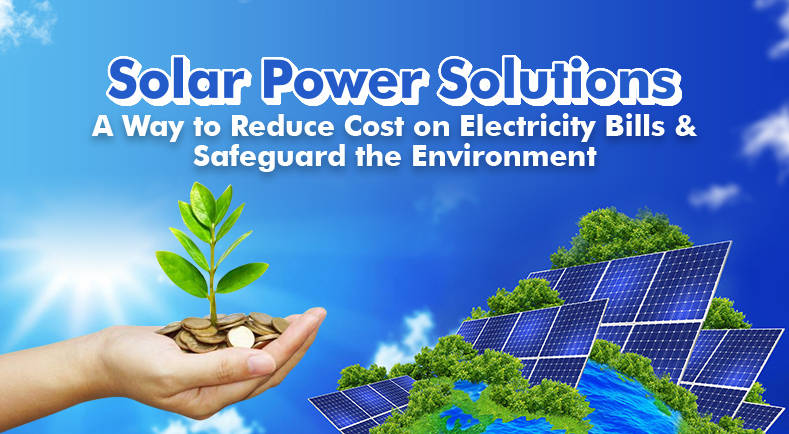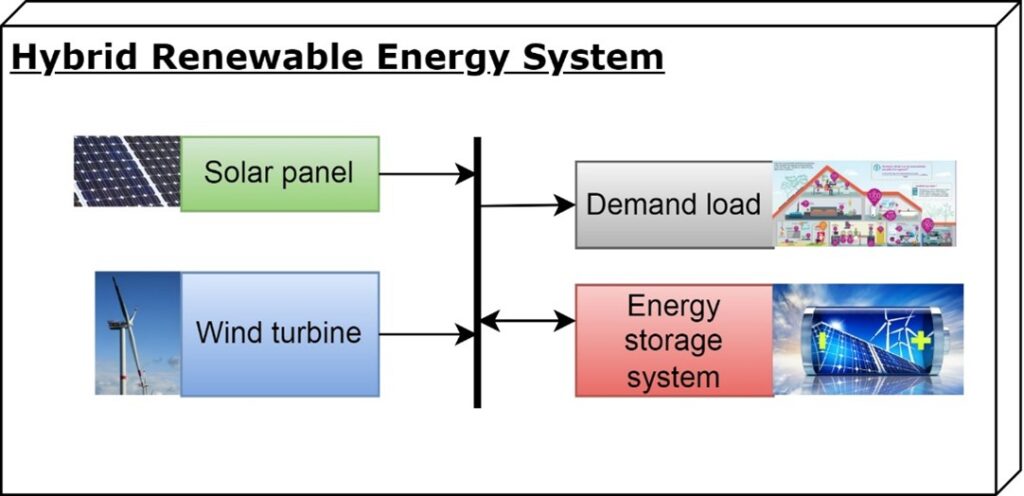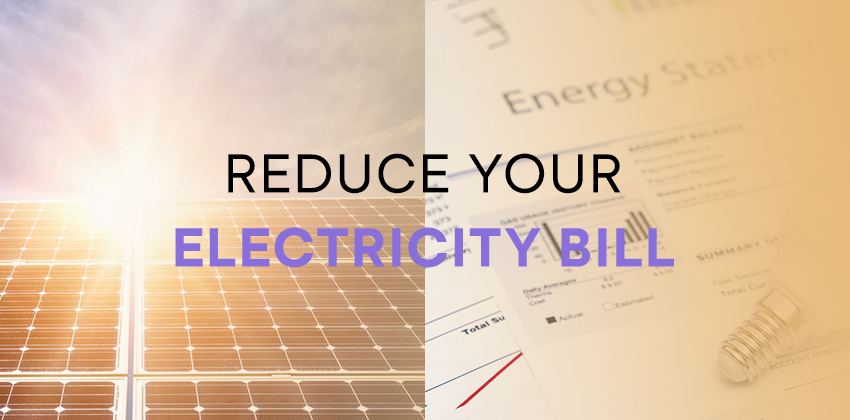The possibility of getting rid of electric bills using green energy is appealing. In a time where the costs of living are constantly increasing and environmental issues are top of mind and many are searching for ways to lower their energy (Zero Electricity Bills) use while decreasing their environmental footprint.
The thought of living in an apartment where you don’t need to doubt about the electricity cost sounds like a dream to be realized. But is it really achievable? Renewable energy can truly meet the entire electricity requirements of your home and what are the factors that determine the achievement of such a target?
This article will discuss the potential, challenges and actualities of generating suitable power from renewable sources, such as wind and solar power to completely reduce your electric bill.
How can you bring off Zero Electricity Costs using Renewable Energy Works
The possibility of having zero electric bills using renewable energy is based on a simple idea: producing more energy than the home uses. Through the use of renewable energy systems, such as wind turbines or solar panels can be used to generate electricity and, in certain instances, sell the excess in return to grid.
But, the success of this process is dependent on many factors, such as the effectiveness of the technology as well as how much energy you’ll need for your home and the environmental conditions like the availability of sunlight or wind.
The biggest challenge is balancing energy production with consumption. homes that obtain this aim typically combine high-efficiency energy systems and lower consumption methods, which makes them more cost-effective and sustainable.
Solar Power as a Path to Zero Electricity Bills
For many home owners, solar power provides the most affordable way to no electricity costs. Solar panels harvest sunlight and transform it into energy, which is the environment with a sustainable and renewable energy source.
In the event that your solar panel is big satisfying well-designed and effective, they will generate enough power to cover all the needs of your family.

Efficiency of solar panels is an important factor in this. Panels located in areas with lots of sunlight will be more successful in reducing the cost of electricity. However, homes in areas that have often cloudy days or shade from trees might require extra panels or additional energy sources to meet their energy targets.
Furthermore the property’s capacity to use solar energy is dependent on its roof’s angle, which direction in which it faces, as well as whether it has suitable surface area to place sufficient panels.
Homeowners who aren’t able to put in suitable panels might not bring off 100% energy independence, but they will be able to significantly reduce electric bills.
Wind Energy and Its Potential for Free Electricity
Wind energy is a different renewable source of energy that can help to reducing your electric bill. Small-scale wind turbines can produce energy in areas that have consistent winds, which makes them an ideal feature for homes in rural areas or in areas with high winds. But, wind power isn’t always feasible; it depends heavily on geographical and local climate.
For homes in the region with many wind, turbines will produce satisfying power to supply the demands of daily life. However wind energy systems require substantial initial investment as well as ongoing maintenance.
It is also crucial to assess the potential of wind energy intended for use in residential homes carefully, taking into consideration aspects such as noise, local regulations as well as the space needed to install turbines.
The Role of Energy Storage in Zero Electricity Goals
Renewable energy sources such as solar and wind are essentially unpredictable. The sun doesn’t always shine and the patterns of wind change. To combat this energy storage such as batteries are essential.
Homeowners who want to pay no electricity costs with renewable energy sources frequently opt for energy storage solutions to conserve excess energy generated during peak sun or wind hours to use in off-peak times.
Batteries have seen significant advancement in the past few times, with lithium-ion alternatives with longer lives and larger storage capacities.
Storing energy in a battery ensures that your home is powered even when renewable energy generation is at a low level, making it easier to switch off from the grid completely.
Energy Efficiency and Conservation for Maximizing Results
While the ability to generate energy together renewable sources is important in reducing the energy consumption of your home, reducing its consumption is equally crucial to achieve zero electric costs.
Homes that are properly insulated and fitted with energy-efficient appliances consume less energy, making it simpler for renewable energy systems to meet 100% of energy requirements.
Integrating energy-efficient methods like intelligent thermostats and LED lighting and energy-efficient windows, will dramatically reduce your household’s overall energy use.
To get closer to achieving zero cost, you will utilize more of the energy generated from your renewable sources, benefiting you in the process.
Net Metering and How It Affects Electricity Bills
One advantage of staying connected to the grid, even when using renewable energy systems is net meters. Net metering permits homeowners to sell the excess energy they produce in return to grid.
In essence, if your solar panels generate more energy than what you consume the utility company will be able to credit you for the extra.

These credits may reduce your energy usage in periods when your system doesn’t produce satisfying energy.
This could be a key element in cutting down electric costs. In some areas, which have net metering regulations that are favorable homeowners may be able to accumulate sufficient credits to reduce their energy use completely which will result in zero energy bills.
Hybrid Renewable Energy Systems
The process of achieving zero electric bills usually requires a mix of energy sources, referred to as hybrid renewable energy systems.

In particular, combining solar panels and wind turbines can allow homeowners to create electricity with two distinct sources, thereby increasing the overall efficiency and reliability of the system.
This strategy also helps to compensate for the inherent variability that comes from renewable energies. If the sun doesn’t shine however, the wind may be blowing and the reverse is also true.
A hybrid system will provide the most reliable and constant energy supply, which makes it simpler to decrease the dependence on the grid.
Geographical Impact on Renewable Energy Viability
Your home’s location plays an important factor in determining if you are able to accomplish zero electric bills using renewable energy. The weather and the location of your home influence the amount of sun or wind that your home gets and, in turn, affects the effectiveness in the output and efficiency of renewable power systems.
For example, homes located in areas with more sun are more likely to benefit from solar power, whereas houses located in areas that have constant, strong winds are better suited for wind power.
In areas where neither resource is plentiful, getting rid of electric bills could require a hybrid or a more cautious approach to energy use.
Financial Considerations of Going Off-Grid
While the thought of having zero electric bills using renewable energy sounds attractive, it is important to think about the financial aspects.
The initial costs of setting up renewable energy system, particularly when you’re off grid could be significant. Yet, long-term savings can make these systems an excellent option for homeowners.
The payback time for wind turbines, solar panels as well as energy storage units differ however, most homeowners will can see a return on their investment in 5 to 15 years subject to factors such as local rates for energy or government incentives, as well as the dimension that the installation.
Conclusion
The goal of having zero electric bills using renewable energy sources is definitely within reach for a large number of homeowners, specifically those who live in areas that have access to sunshine or wind. If you invest in the correct technology, whether it’s solar panels or wind turbines or a hybrid one and using energy efficient methods, it’s feasible to dramatically cut down and possibly decrease the cost of electricity per month. But, the success of this depends on many factors like the location of the investment, the way you consume energy and the availability of incentives from government.
If you’re able to afford the initial cost in addition to having access to reliable renewable energy sources and have access to reliable renewable resources, having no electricity bills is possible. However, even homes that aren’t able to completely get off the grid renewable energy sources can nevertheless offer additional substantial savings and help to create an environmentally sustainable future.
FAQs
Do I actually complete zero electric bills using solar power by itself?
It is possible to complete no electricity costs with solar power, but it’s contingent on the location you live in the amount of energy consumed, as well as how big your array of solar panels.
Is wind energy an acceptable feature for homes?
Wind energy is an attractive opportunity for homes, especially in windy and rural areas. However, it might prove to be appropriate for urban areas due to space limitations and local laws.
Net metering: What exactly is it? what is it, and in how will it impact my electric bill?
Net metering is an option that permits homeowners who have green energy sources to market surplus energy into the grid. If your system produces more energy than what you consume the utility company will reimburse you with the excess that could benefit to offset the cost of energy when your system isn’t producing satisfying energy.
What is the time frame to get a return on investment in solar and wind power systems?
The time to payback in the case of solar energy is different dependent on the installation cost and local energy costs, and incentives from the government.
What kind of maintenance is needed in renewable systems?
Systems for renewable power, specifically wind turbines and solar panels require only minimum maintenance. Solar panels require periodic cleaning to get rid of dirt and dust, whereas wind turbines require regular inspections and oiling. Batteries used for energy storage might require periodic monitoring and replacement every 10 to 15 years.




1 thought on “How Realistic Is It to Achieve Zero Electricity Bills with Renewable Energy?”